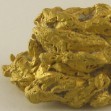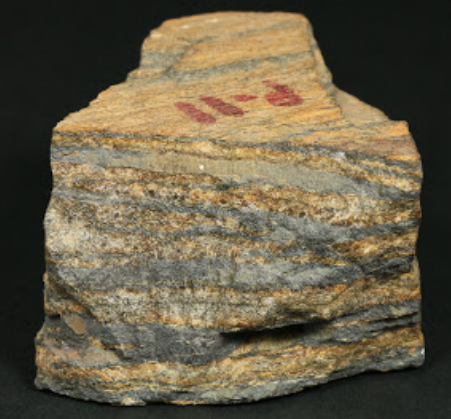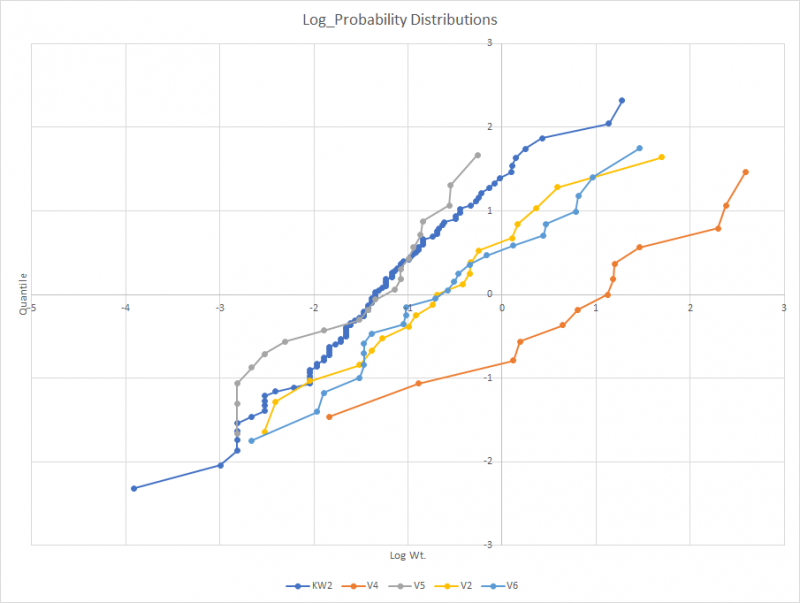-
Posts
56 -
Joined
-
Last visited
Content Type
Forums
Detector Prospector Home
Detector Database
Downloads
Everything posted by Off Grid
-
In North America or Aussie if you are nugget shooting with the claim or land owners agreement, subject to them getting a piece of the value of any finds, what would be typical percentages for their "take"? I assume it would be based on the spot price of gold and you'd have to assume 100% fineness?
-
Are you using a VLF or a PI? I recently got a screaming target in dry clay/shale (both VLF & PI machines) that passed the iron discrimination test (i.e. it wasn't iron). The locality was known for big nuggets so I got all excited. Turned out to be graphite. It could be that there's some carbonaceous or graphitic material intervals in your shale. If you get a black streak if you rub it on a hard rock that's likely your source.
-

What Do The Ground Balance Numbers Mean?
Off Grid replied to Badger-NH's topic in Minelab Equinox Forum
Thanks to everyone for this discussion, I learned a lot. Now I know why my Gold Bug 2 balances at 6-7 in ground that I know has very, very low magnetite. -

7 Days Of Arizona Detecting With The 6000
Off Grid replied to jasong's topic in Detector Prospector Forum
Thanks for sharing your adventure. I'm curious what brand of XRF detector you are using? When I was doing base metal exploration for a living the must-have piece of gear was Thermo Fisher's NITON portable XRF (a cool $40k circa 2010) but prices have now come down a lot. What it was not good at was giving real numbers for cobalt in iron rich environments. The problem is that the cobalt XRF peak is right next to the iron peak and the software couldn't tell whether it was reading a cobalt signal or the shoulder of the iron bell-curve. https://www.olympus-ims.com/en/insight/the-fault-with-cobalt-overcoming-the-challenges-of-battery-metal-exploration/#:~:text=XRF is prone to inter,for XRF to ID cobalt. -

Garrett Land & Sea Pi Detector Use
Off Grid replied to GrievousAngel's topic in Garrett Metal Detectors
"Hip mount works ok but I have found it will cause the machine to false a little when coil is swung towards the control box " That's interesting. I'm about to field test my ATX modification using an Infinium DD coil mounted on an old GB rod with the ATX box slung over my left hip. I hadn't thought about what variable coil to box spacing might do. It'll be a while but I'll post how it all works -

Garrett Land & Sea Pi Detector Use
Off Grid replied to GrievousAngel's topic in Garrett Metal Detectors
-

Garrett ATX Backpack Modification
Off Grid replied to Steve Herschbach's topic in Garrett Metal Detectors
What a coincidence this post has resurfaced. After a long and agonizing journey my Infinium 10x5 DD is now in Africa (US dealer said Garrett prohibits them from shipping out of country. Is that right or just BS?), Right after Christmas I'll be modifying my ATX to an "ATX-Ultra Lite" with the coil on a Gold Bug Mk1 rod. May look at a backpack for the housing but I've already played around with an arm sling and it seemed OK. It's going to be real interesting testing it on clayey ground that I've already hammered with the GB2 10x5 and 6x4 coils but I suspected the ground was not the best for VLF. -
All of the above plus trying to figure out where Mother Nature has hidden the stuff and, occasionally, getting it right.
-
That's a very good question and I look forward to seeing the feedback you get. On my last trip Einstein's definition of insanity ( "doing the same thing over and over and expecting different results") kept going through my mind. But to answer your question, personally I'd say move on after a) about 3 attempts with no success at all or b) when you've run out of different things to do on the same patch. I attach my score sheet so far and this is for bone dry, very rocky, low mineralization ground with thin soil all done with a GB2. I have an ATX but it mostly stays in the truck. Also I don't do this for a living; it has to be the world's worst business model! As you can see the law of diminishing returns generally applies in both size and number of nuggets. In my case keeping a patch alive has been mostly due to moving rocks, switching from a 10" to 6" coil and sheer bloody mindedness. But that only delays the inevitable. There are exceptions. I'd kinda given too much credit to the "old timers", stayed out of worked dry washes and so I didn't find patch 6 until my third attempt. It took me six attempts to find the Patch 2 channel extension (eat your heart out Einstein)!. But, 3 dry runs or when plumb out of ideas seems sane. Data.xls
-
Is the problem metallic iron trash, ironstone or all of the above? My gear is different so I can't offer a solution but you are not alone! Tried a new area last week, laterised ironstone-rich terrace gravel over weathered dolomite and both my VLF and PI struggled. Had to run the GB2 in iron-discrimination mode and the ATX really struggled to ground balance. I found myself wondering if the Garrett VLF at 24k would offer a material improvement over the 71k GB2. Will follow this thread with interest.
-
Even here in Africa, with only a fraction of US and Aussie activity, I'd have to echo all of the above, it's a hobby and a great one but that's all it is. I must have made eight 7-10 day trips to my patch over three years and have 4 oz to show for it. I've had a one once day, a couple of half ounce days and a whole bunch of 0.1 gram days and that's on virgin ground (albeit a very skinny virgin). These days it's getting really hard to find anything but the experience is as good as ever.
-

Will An Infinium 5x10 Coil Work On The Seahunter Mkii?
Off Grid replied to kac's topic in Metal Detector Advice & Comparisons
The Infinium 10x5 DD is compatible with the ATX but Infinium mono's are not. I don't know about your machine, I guess you'd best ask Garrett. -

South Africa: Unidentified Stones Spark Diamond Rush
Off Grid replied to Erik Oostra's topic in Detector Prospector Forum
Credibility is like virginity. You can only lose it once. But I'll go out on a limb and bet that this stuff turns out to be zeolite or barite. It's an area with big dolerite sills intruded into shales and sandstones and they cook up quite a bunch of odd minerals. -
To GB's questions hopefully the attached Excel file (to make a long story even longer) clears things up and you can make your own plots and interpretations. A straight line on a log-probability plot tells me I likely got everything because alluvial minerals are log-normally distributed. It's a bit like quantum mechanics! Nobody knows why it works but the overwhelming evidence shows that it does work. When you don't get a straight line it can indicate several things, as I try to explain, but an apparent excess of large nuggets from a thick profile would suggest to me I'm missing small nuggets. The weight units are the logarithm of the weight. Yes, all GB2 but it's a very thin gravel and the GB2 got there first. Would you go into detail about what you mean by this? I.e. why does your plot resulting in a straight line indicate that you've cleaned up the patch? Also, what are the weight units of the horizontal scale? And were all of these nuggets found with the Fisher Gold Bug 2? Thank you Freak for the Nuggethead video (I've subscribed). USPS permitting I'm about to fit a 10" Infinium DD coil to my ATX to get between the big rocks and also see how it compares to the GB2 once coil size (not winding mind you) is the same. KW2.xls
-
And then of course you also have Croc Diamonds...... As every self-respecting local in N.E. Angola knows all this stuff about diamonds forming at huge depths and temperatures is just BS and diamonds are really made in the heads of crocodiles. It stands to reason after all.. diamonds are found in rivers and crocs live in rivers. Croc dies, decomposes and his diamonds stay in the river. Nevertheless it came as a big surprise one day back in the '80's when the diamond security police carried a large sack into the plant office and dumped a very decomposed croc on the floor and asked the manager to get the stones out of its head. The manager was a fairly volatile Sicilian so you can guess his response.
-
Hopefully this won't sound too propeller-head but, hey, data is data! I guess the data in the video would show that (all other parameters being equal) detection depth follows something close to a weight to the inverse sixth power rule. That's the theory I got courtesy of MineLab and what my own checks seem to indicate. I confess that once I get a good signal I'm in too much of a hurry to dig it to measure the depth correctly but, yes, about 100% <6"! But I do have all the weights and the other issue that bugs me is "have I got everything?". Found this post from Aussie on the subject. https://www.gold-prospecting-wa.com/gold-nugget-distribution.html Long story short, plot your nugget patch data as a log-probability plot (Google will tell you how to do it in Excel). If you get a straight(ish) line you've got everything. Ideally you need about 30 nuggets! My star patch below is KW2 with close to a hundred nuggets (don't get excited that's only about an ounce and a half) and it's an alluvial terrace, no question. The plot is pretty straight. I have two 3-4 gram oddball nuggets that don't fit at the top end but the way the tail lifts below log -2 told me I'm missing small stuff. Put the 6" coil on the GB2 and started to find small stuff where I'd made 2-3 passes with the 10" coil.
-

Non Minelab Pi Detectors
Off Grid replied to AUgetter's topic in Metal Detector Advice & Comparisons
I hunt gold on dry land hillsides with generally low mineralization but some very mineralized fossil black-sand bearing sandstones and wet clay after (very infrequent) rain. My GB2 struggles with these and I figured I needed a PI. I agonized long and hard over whether to buy the ATX or the GPX 5000 and in the end got the ATX (in 2019) given the large price differential and low performance differential between the machines. I had not seen Steve's 2014 review until this post but his experience mirrors mine exactly. It's a great machine but the bad ergonomics are a huge downside particularly if you are patch hunting; to the extent that I usually leave it in the back of the truck and default to the GB2 with the 10" DD coil. It comes out of the truck for the clay and the fossil black sand and then it's a pleasure to use compared to the GB2 that in fairness isn't designed for such stuff. I will persist with the ATX and out of curiosity I'm looking for an Infinium 10" DD coil that is compatible with the ATX, lighter and can get closer to the big rock strewn ground I have to deal with. I'm not expecting miracles but it'll be interesting. Also, in fairness I've got maybe 25 hours on the ATX and several hundred on the GB2 so the jury is still out but, in hindsight, buying a used MineLab might have been a better decision for me. Having paid $2.2k for the ATX I was then offered a used GPX5000, here in Africa, for $3k (Arghhhhh!). Such is life. In foresight I'll be very interested to see how the upcoming Fisher PI works out -
Yes, I'm based in Africa but it's a big place so there's no one answer as to why no posts? Yes, there's Internet but it varies from 5G to 0G depending which country and where in the country you are. There is activity, Google "metal detecting/South Africa" and you'll get hits . Google "metal detecting/Equatorial Guinea" and you won't. My guess is that there's a booming gold detecting scene in lode gold places like Ghana, Mali and southern Ethiopia around Lega Dembi but it's all under the radar. But these are places you might not want to go or at least send your mother-in-law first to check it out. Interesting that someone says Africa is MineLabs biggest market. Any better resolution on whereabouts I've known a few folks that swing a GPX 5000 in SE DRC and Zimbabwe but it's all under the radar. Trouble is that if the locals see you next thing you know there's a land invasion. 99% of the population don't have a thousand bucks or so and if they did higher priorities than a detector. In some places it's illegal to hold unwrought gold which dissuades that market. Another issue that we have and you don't have is ordnance. There's a place in Mozambique where I'd give my left testicle to prospect. Millimetre gold stringers in quartz. But it's also richly endowed with anti-personnel mines. OK so you've a metal detector and you'll find them (except the one you don't). So you'll think long and hard before you dig everything won't you? We probably have more and better beaches than the US and I've seen folks with detectors what's missing are hordes of gold laden babes replenishing the resource like they do for you guys! Happy Hunting
-

Mystery Rock / Mineral Found While Detecting
Off Grid replied to GB_Amateur's topic in Rocks, Minerals, Gems & Geology
At an SG of 2.65 it has to be mainly quartz and it does look like a quartz-rich igneous or metamorphic rock. My guess is that it has a disseminated conductor as a minor component that's causing the response. Maybe a graphitic gneiss or something granitic with some sulfide a.k.a. "hot rock". Steve has an old post from Dove Creek Alaska showing quartz monzonite and great chunks of gold running through it. You might get lucky....... -
It looks like magnetite to me. There's some tests you can do in the link below. A meteorite would generally have a melted look to the surface skin. If you have a gas torch heat some powder to red heat. If it cools to a red color and loses its magnetism it was magnetite and is now hematite. https://meteorites.asu.edu/meteorites/how-can-i-find-a-meteorite



